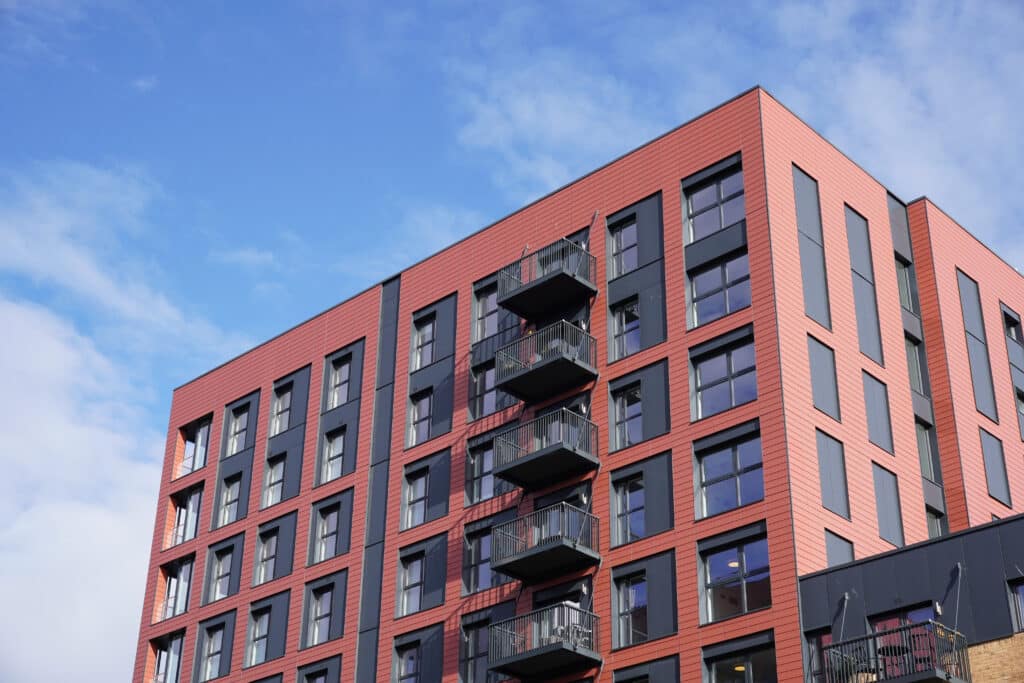Giles Stratton | Bishop & Sewell
The Upper Tribunal (“UT”) has confirmed in the recent case of Almacantar Centre Point Nominee No 1 Ltd and another v de Valk and others [2025] UKUT 298 (LC) that qualifying leaseholders are not liable for the costs of replacing unsafe cladding, no matter when it was installed.
This case emerged out of the proposed replacement of the façade of the well-known Centre Point near Soho. The original façade comprises a timber-frame and single-glazed windows above spandrel panels. Over time, due to the nature of the construction, wherein water was trapped in the façade causing the timber parts to rot, it has deteriorated and it now requires a complete replacement estimated to cost £7 million, or £240,000 per flat.
Normally, qualifying leaseholders would only be protected against paying for a façade replacement through their service charges if it was a ‘relevant defect’ under the Building Safety Act 2022 (“BSA”). In order to be a relevant defect, the façade would have to be both a building safety risk (i.e. it causes a risk of the spread of fire or structural failure) and would have to have been installed between 1992 and 2022.
However, the BSA appeared to provide an additional protection at paragraph 8 of Schedule 8, so that where the cladding system on a building is ‘unsafe’, qualifying leaseholders are protected from paying for its remediation.
The question before the UT was whether paragraph 8 of Schedule 8 should be read as part of the ‘relevant defect’ regime, which would mean leaseholders were liable for its repair due to the age of the building making the façade fall outside of the protections offered by the rest of the Schedule, or whether paragraph 8 provides a separate, blanket protection.
What is ‘cladding’ and what makes it ‘unsafe’?
The UT held that the whether something is ‘cladding’ is a matter of fact and will depend on the circumstances (in this case it was held that the façade was cladding for the purposes of the BSA), and the term ‘unsafe’ should be given its ordinary meaning, and would also depend on the circumstances of the case. Crucially, this means that, unlike ‘relevant defects’, the issue which makes the cladding unsafe does not have be the risk of the spread of fire or structural failure – it is anything which makes the cladding unsafe in the normal use of the word.
Does it matter when the cladding was installed?
The UT held that unlike in ‘relevant defects’ regime, there is no requirement for the cladding to have been installed in the 30 year period prior to 2022 for the protection established by paragraph 8 of Schedule 8 to take effect, and the protection applies no matter when the cladding was installed.
Conclusions and Points to Note
In this case the UT concluded the façade met the definition of both a ‘cladding system’ and ‘unsafe’ and so the leaseholders could not be forced to pay for the replacement of the tower’s façade.
More generally, it is now crucial for landlords and management companies to be aware whether their external walls contain structures which may be considered cladding systems, and whether these are in good condition, particularly where these structures were installed before 1992.
This is because where the cladding systems remain safe and were installed pre-1992, it is outside the ‘relevant defect’ protections and so all leaseholders can be recharged the costs of remediation.
Where the cladding systems remain safe and were installed between 1992 and 2022, qualifying leaseholders are protected from remediation costs only where the problems with the cladding relate to the spread of fire or structure failure, but may still be charged in other cases.
However, the moment the cladding systems become unsafe, qualifying leaseholders will be protected from liability for the remediation costs no matter when the system was installed, and no matter the nature of the issue causing the cladding system to be unsafe.
In light of what must be viewed as a ‘victory for tenants’, lessees may now see is an uptake in cyclical works to cladding before it becomes ‘unsafe’, in fact increasing the cost burden on them where it may have otherwise been left for a greater period. What this judgment does not address is what the position will be where cladding is safe at the start of any section 20 progression but may become unsafe if those works are delayed and in particular, as a result of delay by tenants. It is also not clear whether this judgment will have a material impact on building values and how the market will respond, nor what additional due diligence will be encompassed in building surveys at a pre-acquisition stage.
Giles Stratton is part of Bishop & Sewell’s Litigation and Dispute Resolution team.
http://www.bishopandsewell.co.uk



